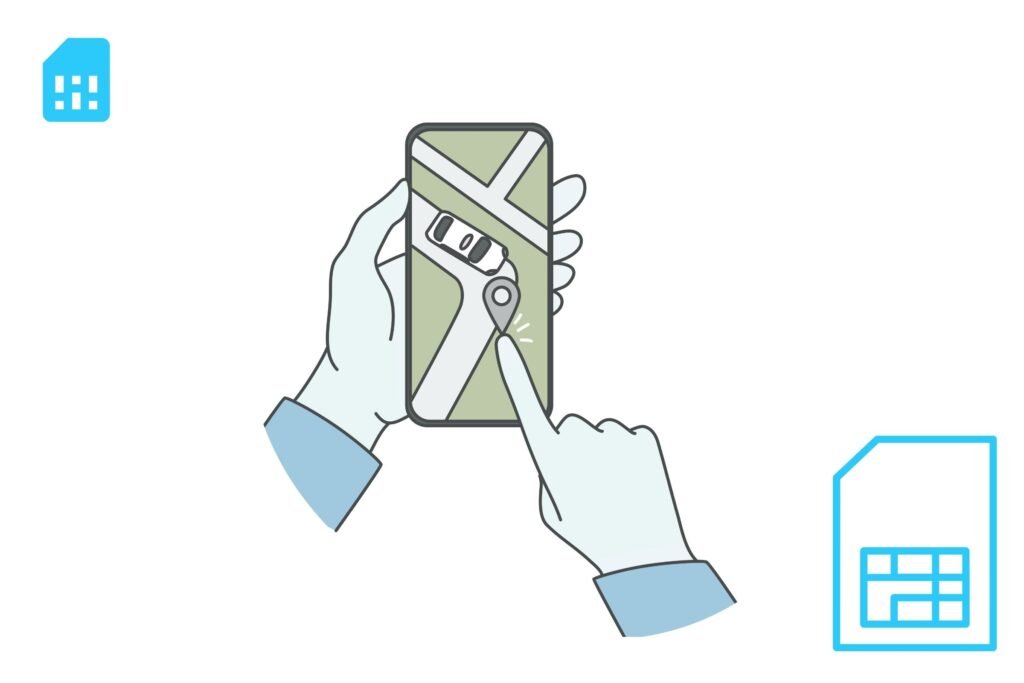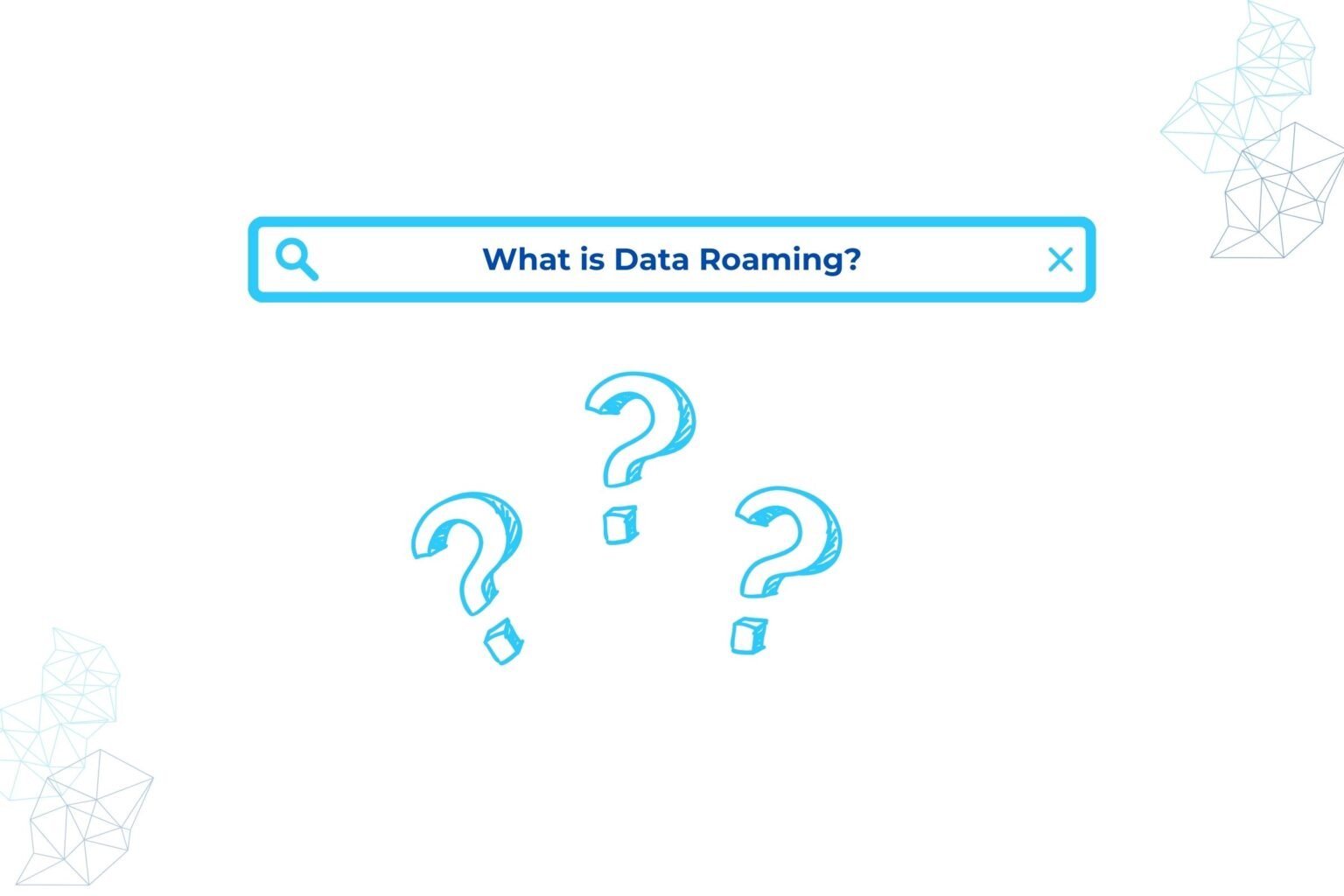Introduction
Staying online when traveling has become just as crucial in today’s connected world as bringing your passport. But what exactly is data roaming, and how can you use it without breaking the bank? This comprehensive guide will demystify data roaming, helping backpackers and global adventurers understand how to stay connected affordably while exploring the world.
Data roaming is a mobile service that allows you to use your phone’s data connection when you’re outside your home network’s coverage area, typically in a foreign country. While it offers the convenience of staying connected, it can also lead to unexpected and often exorbitant charges if not managed properly. As we delve deeper into the world of international connectivity, we’ll explore not just what data roaming is, but also how to use it wisely and what alternatives are available to keep you connected without emptying your travel budget.

Traveler using smartphone with a map overlay
😰 Hate surprise charges? Switch to a prepaid eSIM and skip the roaming traps—no contracts, no bill shock, just smooth internet abroad.
Understanding Data Roaming: The Basics
What is Data Roaming and How Does it Work?
Data roaming kicks in when your phone connects to a foreign mobile network. This process allows you to continue using mobile data services like internet browsing, email, and apps, even when you’re far from home. Here’s a breakdown of how it functions:
- Network Detection: Your phone automatically searches for available networks when it can’t find your home carrier’s signal.
- Connection Establishment: It connects to a partner network based on agreements between your home carrier and local providers.
- Data Transmission: You can then use data services, with usage tracked and billed by your home network.
Understanding this mechanism is crucial for managing your connectivity and avoiding unexpected charges while traveling.
The Cost of Convenience: Why Data Roaming Can Be Expensive
While data roaming offers uninterrupted connectivity, it often comes at a premium. Several factors contribute to the high costs:
- Inter-carrier Agreements: Your home network must pay the foreign network for the service, a cost passed on to you.
- Lack of Competition: Limited options in some regions can lead to inflated prices.
- Data Pricing Models: Some carriers charge exorbitant rates per megabyte of data used.
For example, some U.S. carriers charge up to $2.05 per MB when roaming, which can quickly add up if you’re streaming videos or using data-heavy apps.
Managing Data Roaming: Tips and Strategies
How to Turn Data Roaming On and Off
One of the simplest ways to manage data roaming is by controlling when it’s active. Here’s how to toggle data roaming on various devices:
For iPhone:
- Go to Settings > Cellular or Mobile Data
- Tap Cellular Data Options or Mobile Data Options
- Toggle Data Roaming on or off
For Android:
- Go to Settings > Connections > Mobile Networks
- Toggle Data Roaming on or off
Remember, turning off data roaming doesn’t affect your ability to use Wi-Fi networks abroad.
Setting Data Limits and Alerts
To avoid bill shock, set up data usage alerts:
For iPhone:
- Go to Settings > Cellular > Cellular Data Usage
- Scroll down and tap “Reset Statistics” to start fresh
- Check this regularly to monitor your usage
For Android:
- Go to Settings > Connections > Data Usage
- Set a data warning and limit
By setting these alerts, you’ll receive notifications as you approach your data limit, helping you stay within budget.
Alternatives to Data Roaming
Local SIM Cards: The Budget-Friendly Option
Purchasing a local SIM card can be an excellent alternative to data roaming. Here’s why:
- Cost-Effective: Local rates are often much cheaper than roaming charges.
- Better Coverage: Local SIMs typically offer better network access within the country.
- Flexibility: Many providers offer short-term plans perfect for travelers.
However, remember that using a local SIM means you’ll have a new phone number, which can be inconvenient for receiving calls or texts from home.
eSIM Technology: The Future of Travel Connectivity
eSIMs (embedded SIMs) are revolutionizing how travelers stay connected. Here’s what makes them stand out:
- Convenience: No physical SIM card needed; activate plans digitally.
- Multiple Profiles: Keep your home number while using a local data plan.
- Wide Coverage: Many eSIM providers offer plans covering multiple countries.
Gohub’s eSIM solutions provide seamless connectivity across over 100 countries, making it an ideal choice for frequent travelers.
Wi-Fi Hotspots: Free but Limited
Relying on Wi-Fi hotspots can be a free way to stay connected:
- Pros: No data charges, widely available in urban areas.
- Cons: Limited availability, potential security risks, inconsistent speeds.
When using public Wi-Fi, always use a VPN to protect your personal information.
Smart Data Usage Habits for Travelers
Offline Maps and Content
Before your trip, download essential content:
- Use Google Maps’ offline feature to download city maps.
- Save important documents like boarding passes and hotel reservations.
- Download entertainment content like music, podcasts, or e-books.
These preparations can significantly reduce your need for data roaming.
Data-Saving App Settings
Optimize your apps to use less data:
- Disable auto-play videos on social media apps.
- Turn off background app refresh for non-essential apps.
- Use data compression features in browsers like Chrome.

Messaging Apps for Efficient Communication
Utilize messaging apps that use less data:
- WhatsApp and Facebook Messenger for texts and calls.
- Skype for international calls (uses less data than traditional voice calls).
These apps can help you stay in touch without incurring high roaming charges.
Understanding Roaming Agreements and International Plans
EU Roaming Regulations
For travelers within the European Union, roaming has become much more affordable:
- “Roam Like at Home”: EU citizens can use their domestic plans in other EU countries without additional charges.
- Fair Use Policy: Limitations may apply for extended stays abroad.
This policy has significantly reduced the cost of staying connected for EU travelers.
International Day Passes
Many carriers offer daily roaming passes:
- Flat Fee: Pay a set amount per day for a data allowance.
- Convenience: Use your regular number and plan abroad.
- Considerations: Can be expensive for longer trips.
For example, some U.S. carriers offer day passes ranging from $5 to $10 per day.
The Future of Mobile Connectivity for Travelers
Emerging Technologies
The landscape of international connectivity is evolving:
- 5G Roaming: As 5G networks expand globally, expect faster data speeds and potentially new pricing models.
- Satellite Internet: Companies like Starlink are working on global satellite internet, which could revolutionize connectivity in remote areas.
These advancements promise to make staying connected while traveling even easier and more affordable in the future.
Conclusion: Staying Connected Without Breaking the Bank
Understanding what data roaming is and how to manage it is crucial for any traveler in today’s digital age. By employing strategies like using local SIM cards, leveraging eSIM technology, and adopting smart data usage habits, you can stay connected abroad without incurring astronomical fees.
Remember, the key to affordable connectivity lies in planning ahead and choosing the right solution for your travel needs. Whether you opt for Gohub’s flexible eSIM plans or decide to navigate the world of local SIMs, being informed about your options will ensure you stay connected without breaking your travel budget.
Before your next international adventure, take the time to review your connectivity options and set up the necessary safeguards. With the right approach, you can enjoy seamless global connectivity, sharing your travel experiences in real-time without worrying about a startling phone bill when you go back.
✈️ Stop paying double when you travel. Discover how travel eSIMs help you avoid roaming fees entirely and stay connected without stress.








